On an early Sunday morning in mid-July 2015, I found myself at the Brisbane International Airport introducing myself to Peter Ward and Gregory Barord, nautilus biologists from The United States who, until that morning, I had only communicated with via email.
We were about to embark on a mission: to search for a rare nautilus species in the Bismarck Sea.
The Mysterious Allonautilus
The events that had led me to this expedition began in 2013, when Ward, a well-known palaeontologist and nautilus expert learnt of The Nature Conservancy’s work in Papua New Guinea’s Manus Province and emailed me to see if I was interested in working with him.
Three decades ago, Ward and Bruce Saunders became the first people to ever capture live Allonautilus scrobiculatus from the waters of Manus Province. That allowed them to confirm that the species did not belong to the genus Nautilus at all. They discovered that it was actually a member of a recently evolved genus Allonautilus.
A. scrobiculatus is commonly referred to as the crusty nautilus due to the encrusting layer of periostracum — a skin-like layer of protein — that covers most of its shell.
Drift shells of A. scrobiculatus have been found throughout Papua New Guinea and the Solomon Islands, but there have been no confirmed sightings of live A. scrobiculatus since 1984 and live animals of this species had never been filmed.
Fast forward two years, and with the support from National Geographic, National Science Foundation and the Conservancy we were finally ready to go.
Empty Traps in Kavieng
Our first port of call was Kavieng, New Ireland Province, which is located 400 kilometres east of Manus. We had learnt from Jeff Kinch, principal of the Papua New Guinea National Fisheries College, that drift shells of the common Nautilus pompilius and A. scrobiculatus were found in Kavieng, and we felt sure that live A. scrobiculatus would also be found in Kavieng waters.
With the assistance of National Fisheries College staff and Tapas Potuku from the Conservancy’s Kavieng field office we spent a week setting traps on the ocean floor at depths of 1000 feet. We also set baited underwater video cameras at these depths, to record for the first time baseline information on the species composition and status of these deep-water ecosystems.
After a week of research we conceded that our assumption about Allonautilus had been wrong: while Nautilus pompilius were more abundant than at any other location in the Indo-Pacific that Ward and Barord had ever surveyed, we didn’t capture any A. scrobiculatus.

We moved on to Manus Province, where we were meet by another one of my colleges Manuai Matawai and Manus provincial fisheries officer Kanawi Pomat. That afternoon we travelled to Ndrova Island on Matawai’s famous climate challenger canoe.
Ndrova Island was one of the locations where Ward and Saunders had found Allonautilus in 1984, and in 2014 the Mbunai community declared the island and surrounding marine environment a protected area. Ndrova forms an important part of the Mwanus Endras Asi Resource Development Network, which unites eight tribal chief areas from Southern Manus.
In May 2015, the leaders of this tribal network declared their entire customary seascape (50,000 hectares) as a managed area. On our arrival at Ndrova we were greeted by Chief Peter Kanawi, Dr. Pongie Kichawen, the director of the Mwanus Endras Asi Resource Development Network, and 18 members of the nearby Mbunai community who would be assisting us for the next two weeks. It was an emotional return for Ward, who reunited with several of the Mbunai team members that had worked with him three decades earlier.
We could not wait to get started — even though the Order Nautilida has been around for more than 500 million years and survived all of earths major extinction events — so that evening we set two traps in the dark. The following morning the excitement among our group was running high.
For Ward, the last person to see Allonautilus alive 31 years ago, it was approaching fever pitch.

Foiled by Currents and Corals
We felt certain that today would be the day we would capture the elusive Allonautilus on film. In preparation, I charged both batteries for my GoPro and we set up our SCUBA gear before leaving to pull up the traps.
When we arrived at the location of the first trap, the marker buoy was nowhere to be seen. We eventually found it, but it was clear that the trap had drifted in strong currents during the night, and was now in water well over 1000 feet deep and therefore floating well above the bottom.
Members of our team enthusiastically pulled up the trap, treating the task like a game of tug-of-war. When there was less than 100 feet of rope to go I put on my snorkel gear and entered the water. Floating in the open sea and waiting for the trap to come into view far below me made me feel like a small child who couldn’t wait for Christmas Day —we dropped a tiny trap to the bottom of the ocean and we were about to find out what treasures were inside it.
For Ward, the last person to see Allonautilus alive 31 years ago, the excitement was approaching fever pitch.
Richard Hamilton
When the trap was less than 50 feet from the surface I free dived down to inspect it: it was empty. Surfacing, I broke the bad news to our team and, disappointed, we moved quickly to the second trap. That trap had also moved with the strong currents, but unlike the first one it was on the bottom. We soon discovered that it was actually stuck and it took more than an hour of manoeuvring the boat and pulling on the rope to fee it.
When we finally got the trap to the surface it was badly mangled and empty. To my surprise there was pieces of red coral attached to the trap — apparently our trap had been stuck on a deep-water reef 1000 feet below the surface. As I collected samples of the coral I thought it was entirely plausible that the coral species I was examining could be new to science.
Our entire team was visibly deflated and the explanations for our lack of success were diverse. Perhaps the nautilus were no longer here? Or perhaps the spirits of the sea were hiding the nautilus — known as kalopeu in the Titan language — from us because the scientists among our group were not known to them?
Last Chance for the
Allonautilus
We regrouped after lunch, straightened out our bent trap and planned a new approach: Instead of buoying the traps we would tie them to the reef to prevent them from moving in currents, we would bait them with both chicken and fresh tuna, and on the insistence of local community members we would place them at shallower depths. We set the traps and waited.
When the first trap came into view, I jumped in and free dived down to inspect it. There were three Nautilus and three Allonautilus inside!
I swam as fast as I could to the surface to break the good news. Our team was ecstatic. Half an hour later we were filming Allonautilus on a coral reef wall, and later that day we attached acoustic tags to the shells of a both species so that we could track their movements and learn more about the depth and temperature ranges that they venture into.
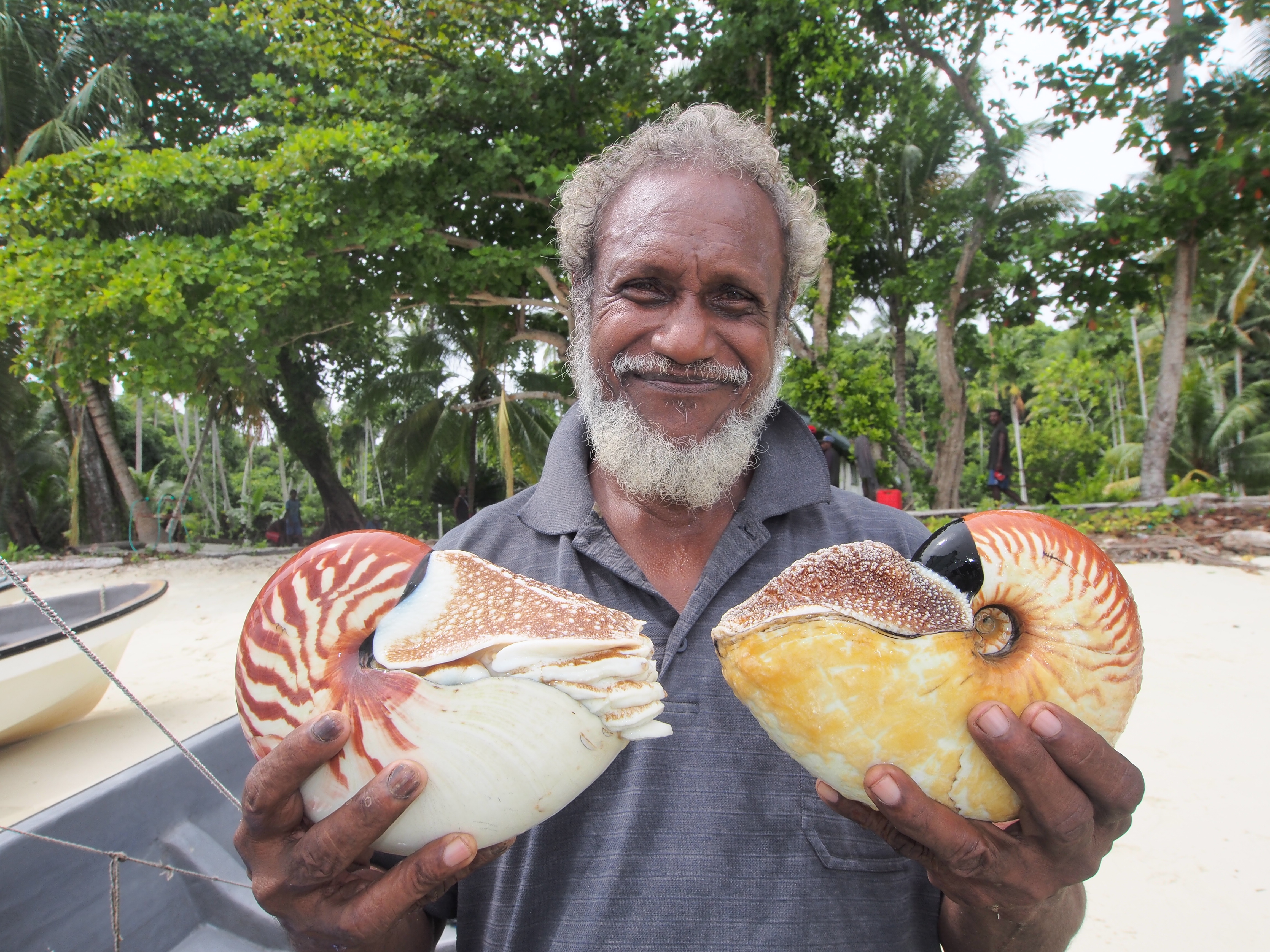

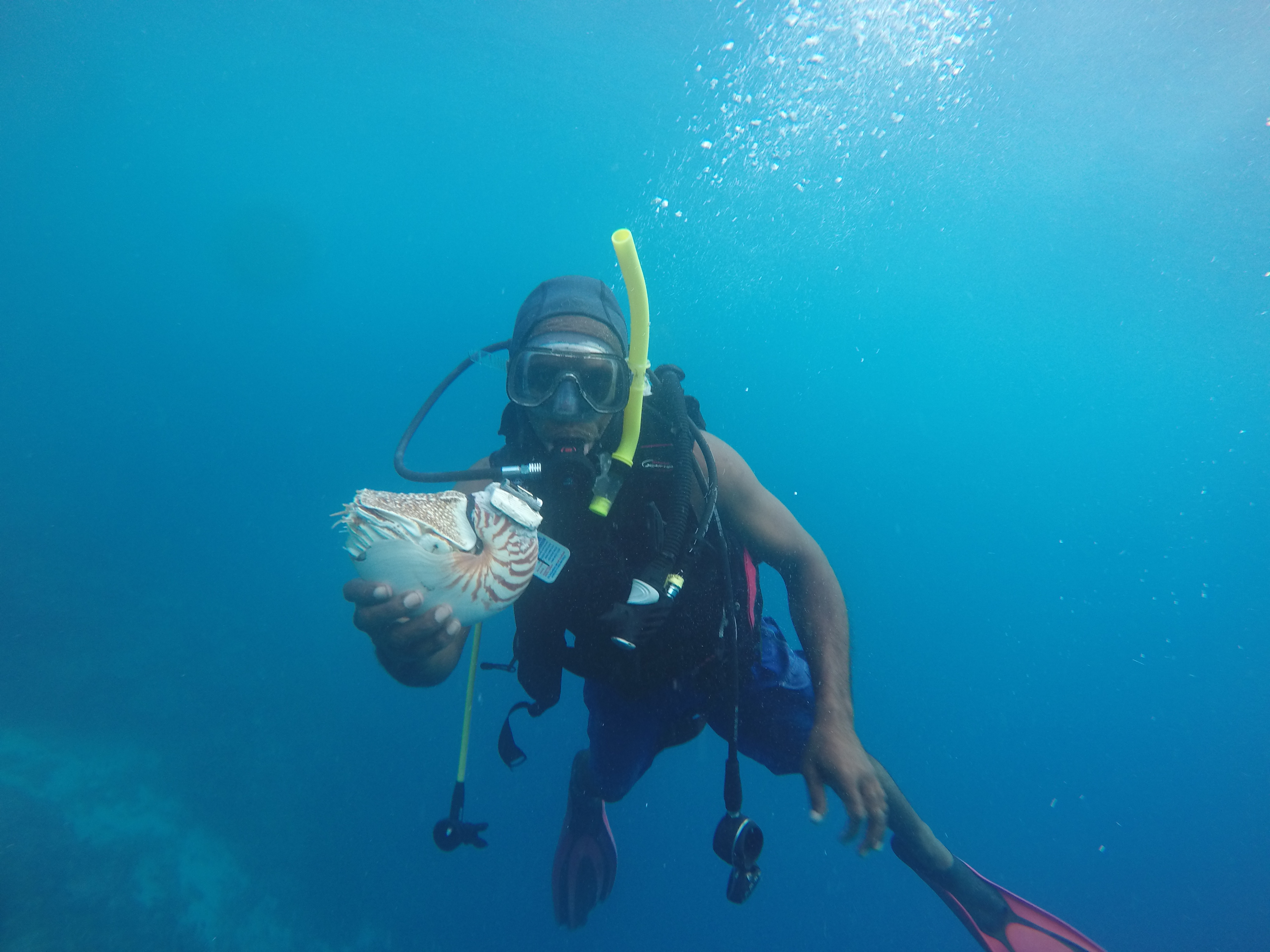
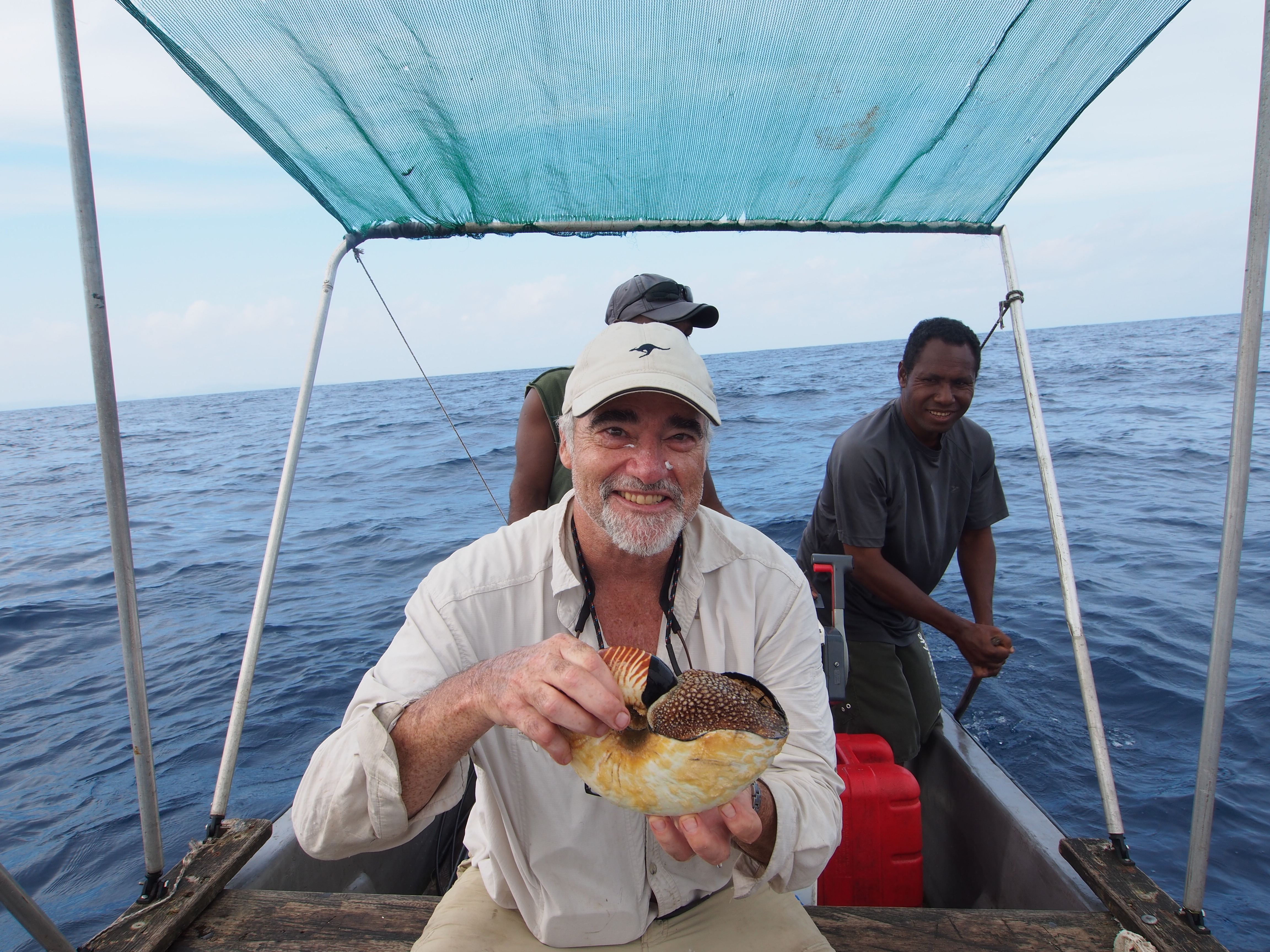
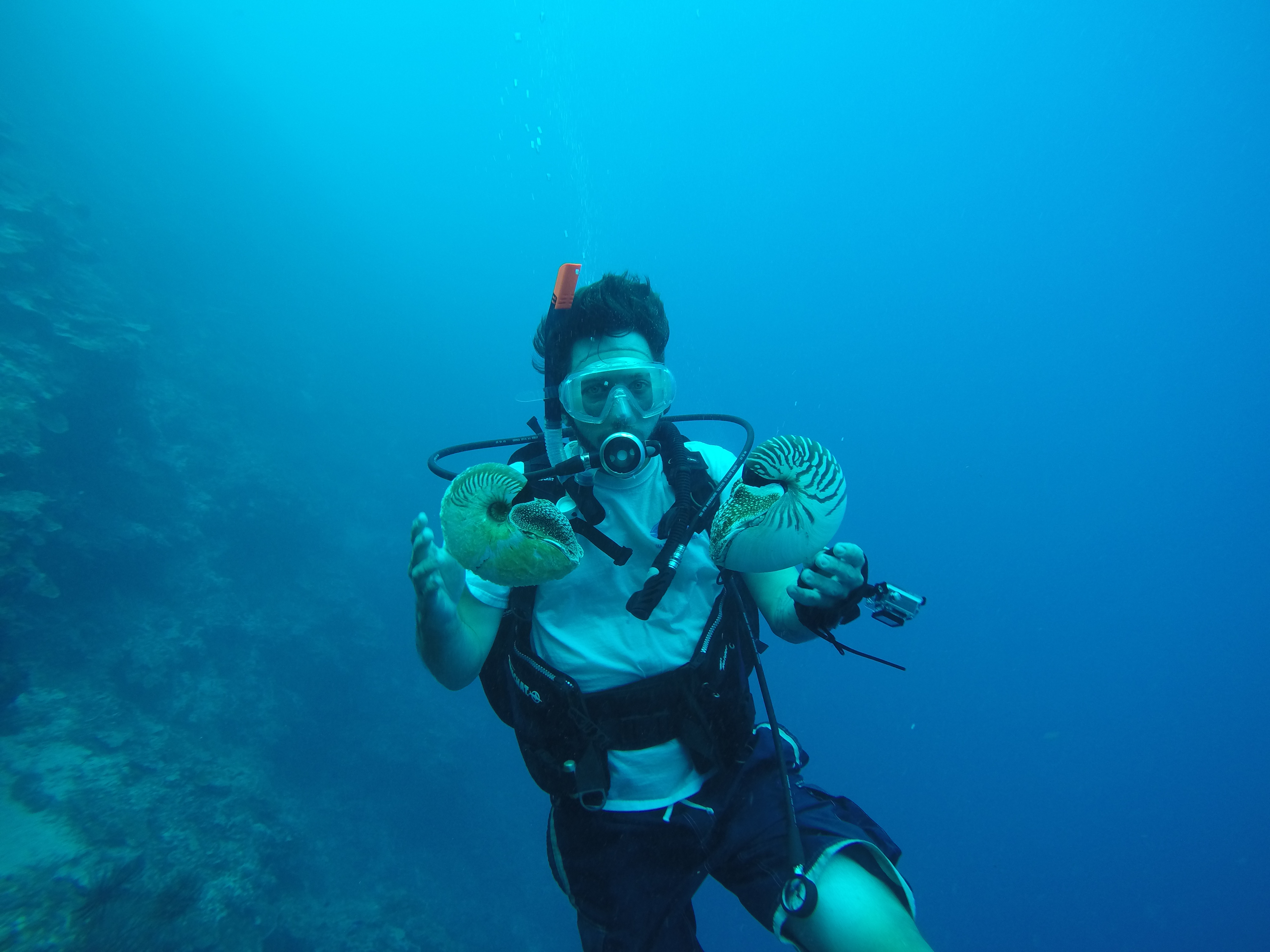
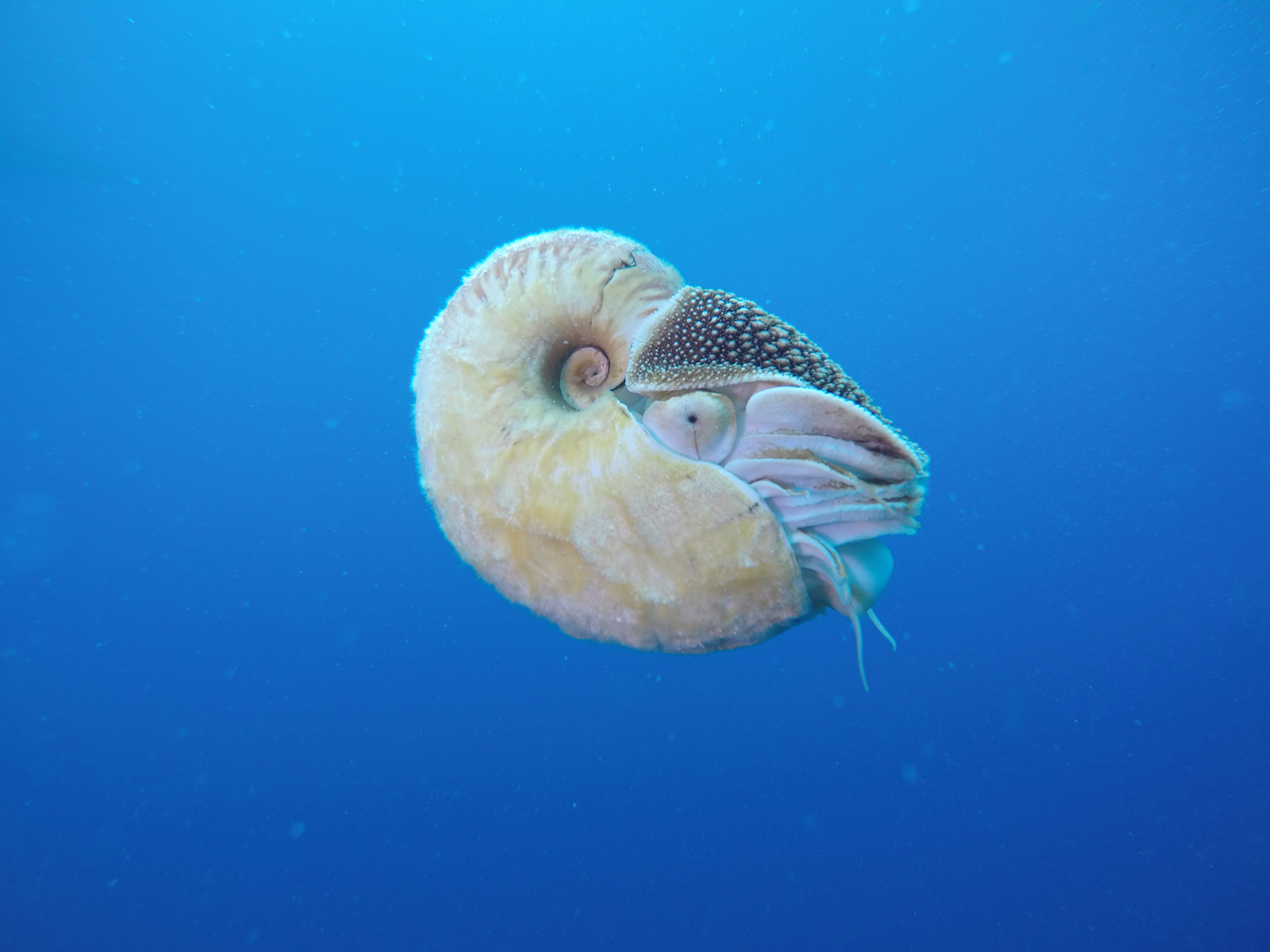
Early the next morning I said goodbye to our team and took a rough boat ride to Manus and several bumpy flights back home to Brisbane.
We had done it.
Our team of scientists, conservationists, provincial fisheries staff and Mbunai community members had found and filmed Allonautilus for the first time, and we were learning previously unknown information about this unique and seemingly restricted marine species.
Obtaining baseline information on deep-sea ecosystems is becoming increasingly urgent as Melanesia moves rapidly into an unprecedented age of deep sea mining. So perhaps most importantly of all, for the first time ever our work with baited underwater video cameras was providing local people glimpses into a hidden world — the deep ocean.



Hi Rick,
This is a great piece of story. Hope we could upload the nautilus video soon on this blog. It tells alot.
Great work bro!
Manuai
Great!
You can also find out what two 11-year olds are doing to help (www.savethenautilus.com) and how you can get involved. Keep up with our research and new photos and videos on Facebook at The Nautilus Files.